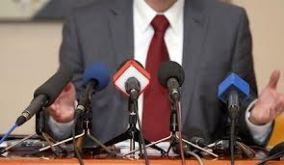Producing a Killer Media Pitch
By Annie Alvarado
Producing a killer media pitch takes knowledge, above average writing skills, the ability to know what your public(s) wants, research, and restraint. So, before you start writing, there are a few things you need to do.
First, you must learn everything there is to know about the product or services that you will be pitching. This way, you will be able to write only the most pertinent information in your pitch and you will be ready for interviews, if necessary. This task includes research on the product or service and on it’s public(s).
Next, when thinking about what to write, there are four aspects that a pitch must contain to get noticed:
The pitch must be….
1. Newsworthy – it must be significant & interesting
2. Timely – is it current
3. Unique – is it distinctive/special – different than every other story
4. Compelling – does it evoke interest from the reader. Don’t include EVERY bit of information – just give them a taste and leave them wanting more!
Now that you have your newsworthy, timely, unique, and compelling pitch – you’re ready to write! While writing remember, to ask your self, “will this make the reader’s life or business easier or better in some way?” Is it giving some kind of information that is helpful to the reader? Also, make sure your writing is concise. Remember, a pitch is not a press release; you’re asking for exposure, help or attention of some kind. (A press release is a news announcement.)
An editor is only going to read the first few sentences of your pitch before deciding to read further or to paper file it. Some editors don’t even make it to the first paragraph and make their decisions based on the subject line; so be sure to make your point in the one sentence placed in the subject line, or your pitch may not be read.
Most editors receive a lot of mail and do not have the time to read long pitches, so be concise. This is where your restraint comes in. Being concise takes practice and hard work, but it will pay off in the long run. The other type of restraint is used when contacting an editor. Before first contact with them, find out how and when they like to be contacted and make a note of it. Each editor has their own preferences and you should abide by them.
Editor Contact Tips:
- Find out how and when the editor likes to receive pitches – Email, phone call, etc.
- Contact the editor exactly as they wish – how & when.
- If necessary, be able to set up interviews immediately (be ready!)
- Always keep your tone friendly and professional (remember if they do not want/need your piece now, they may work with you in the future.)
- With each contact you are building a relationship with the editor – make sure it is a positive one!
Let me leave you with this – I believe the old proverb is true, “If a job is worth doing, it’s worth doing well”…but to do it well, you should enjoy it! Life is too short to work without joy. Now – go forth…write, pitch, blog and enjoy yourself.
Do you have any unique or successful ideas on ‘how to write killer pitches’ that you would like to share? If so, please attach your comment below – I look forward to hearing your ideas!


